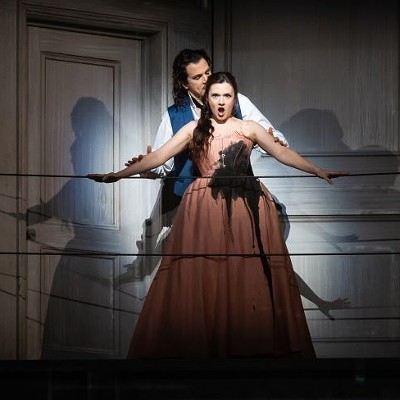Houston's wards are the oldest neighborhoods in the city, and were originally formed in 1840. The wards were arranged along geographic lines, and, in the 19th century, the ward system established areas for political representation - a precursor to today's City Council Districts.
Originally there were four wards, each with its own industry and function in Houston society, and the type of work a person did usually dictated what ward they lived in, rather than how well-heeled they were. For that reason, poor laborers were often neighbors to wealthier professionals as long as they worked within the same basic industry. As time wore on, the Fifth Ward was added to accommodate Houston's growth and surging population, and, in 1876, Sixth Ward was created from a section of the fourth. The Sixth Ward had boundaries at Union Street and Washington Avenue to the North, Glenwood Cemetery (a plantation at the time) to the West, Capitol Street to the South, and Houston Street on the East, and was home to many individuals who worked in the railroad industry.
In the late 1800s, Washington Avenue began to see an increase in commercial activity, with new businesses opening up, and lots of people began to settle in the area which was known as Uptown, a distinction from the nearby Downtown. Many of those new residents were German immigrants bringing their cultural contributions to the Sixth Ward.
Then, in 1906, Houston's form of local government changed, and the ward system was abolished among charges of political corruption. The wards live on today in name only, as a form of cultural identity for many Houstonians living in those oldest neighborhoods, although they haven't had official status in more than 100 years. Many Houstonians use the wards to identity certain neighborhoods, and would probably be surprised at their political district origins, and by the revelation that the wards haven't been on an official city map since the 1920s.
The Sixth Ward was a desirable area during the late 1800s until the 1920s, having street car service, and other amenities that marked it as an upscale area of town. There was a building boom during that period that saw many larger and more elaborate homes built, with modern features such as electricity and indoor plumbing. The prominent architectural styles of the neighborhood encompass several periods of building trends, and there are Greek Revival, Queen Anne and Folk Victorian homes built between the 1850s and into the first decade of the 1900s, as well as later Classical Revival homes and early 20th century Bungalows.
Fortune took a turn for the worse beginning in the late 1920s, when newer suburbs began to appear on the edges of Houston, catering to people entering the automobile age who were lured away from Houston's older central neighborhoods in favor of more modern homes further out. The Sixth Ward entered a long period of decline. Many of the old originally single family homes were turned into multi-tenant rentals run by landlords living in other parts of town.
This was a pattern seen in many of the city's older neighborhoods, and as the decades wore on, the perception of the Sixth Ward became one of poverty and crime, regardless of how fair that reputation was. For many years, Houstonians who had the resources to do so usually chose to live in newer neighborhoods that were usually a considerable distance away from the downtown area and its surrounding inner city neighborhoods. Suburban living was in full swing by the second half of the twentieth century, and it was not fashionable to live in the wards or surrounding neighborhoods like The Heights or Montrose unless a person had no other choice.
Houston has always been a city more focused on looking into the future than one interested in preserving its past, but despite being largely rundown by the 1970s, the Sixth Ward was awarded with the distinction of becoming Houston's first National Historic District in 1978. Despite that honor, positive changes were slow to come about, and my friend Joe Morrison remembers living in the area in the early '90s:
"It wasn't the type of neighborhood where you wanted to walk around outside after dark. There were a lot of cool old homes, but most of them were in really bad shape. The place next to mine was probably 100 years old, but the people living there sold drugs out of the place."
I myself remember an ill-advised night time walk down Washington Avenue after my car broke down during that same time period, and it was far from relaxed. The few people still out on the street were not people I wanted to meet face to face.
But things were slowly changing despite the area's rough edges. In the second half of the '90s, the City of Houston also designated the neighborhood as a Municipal Historical District, and over time many of the rental properties began to transition back into single family homes, with new owners restoring them to their former glory. Still, the two earlier designations as a historic neighborhood did nothing to protect the Old Sixth Ward from developers eager to tear down original homes in order to redevelop those properties. The area was beginning to gentrify and had become a hot real estate market again, being located in such close proximity to downtown and Washington Avenue.
Afraid that the old neighborhood might be redeveloped with townhomes and McMansions by short sighted developers, residents petitioned the city for protected historic district status, and in 2007 that status was granted, making the Old Sixth Ward the oldest intact neighborhood in Houston, with more Victorian homes than any other nearby area other than Galveston.
Driving in the area now, it's hard for me to relate to my fearful night time walk more than 20 years ago. Yes, there are still some rough looking patches here and there, but so many of the homes are beautifully restored and obviously cared for, that it no longer feels like a part of town where a mugging is likely. Instead, the old Sixth Ward feels like a trip in a time machine, with only the current resident's modern automobiles as a reminder that this is a neighborhood in modern day Houston.
It's pretty clear that the future is again bright for the Old Sixth Ward, and with steadily increasing home prices and its incredibly convenient location, the neighborhood is likely to become even more upscale as time rolls on. Even for a guy like me who can't afford to buy an old Folk Victorian in the area, it's still nice to cruise the streets to see an amazing time capsule of Houston's early days.
Flashback:
The Changing Face of Houston - Riverside Terrace
The Changing Face of Houston - Glenbrook Valley
The Changing Face of Houston - Downtown
The Changing Face of Houston - Oak Forest
The Changing Face of Houston - Sharpstown
The Changing Face of Houston - Spring Branch





